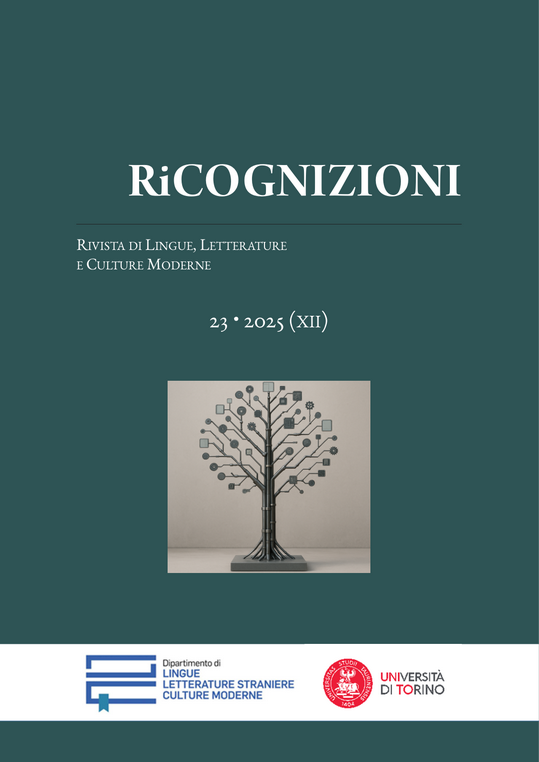Quenya is Practically a Main Character
Elvish-English Multilingualism in Tolkien-inspired Fan-Fictions
DOI:
https://doi.org/10.13135/2384-8987/11545Parole chiave:
Conlangs, Quenya, Elvish Languages, Code-switching, Corpus LinguisticsAbstract
In the last forty years, fan fictions, derivative writings openly based on published works of fiction, have gone from being shared on semi-secretive zines circulating between a handful of people, to being hosted on public online archives, such as Archive of Our Own with 6 million registered users. At the same time, fan studies have grown into an interdisciplinary and transnational field. However, linguistic approaches to fan studies and fan fictions have always been quite marginal, and even more rare are the linguistic works investigating the use of conlangs in fan fictions.
With a corpus-based approach, this study aims to analyse how fanfiction’s authors use Tolkien’s conlangs in their works, focusing in particular on the use of Quenya, by far the best documented language of Tolkien’s Legendarium. The analysis gathers its empirical evidence from a corpus of publicly available fan fictions from AO3, all of them written in English with an explicitly stated use of Quenya.
This investigation will have two main focuses: a) a pragmatic analysis of code-switching from English to Quenya and its stylistic purpose in Tolkien-inspired fanfictions; b) an analysis of the formal characteristics of Quenya in fanworks, aimed at verifying the authors’ level of knowledge of Quenya and (possibly) the sources of such knowledge.
##submission.downloads##
Pubblicato
Come citare
Fascicolo
Sezione
Licenza
Gli autori che pubblicano su questa rivista accettano le seguenti condizioni:- Gli autori mantengono i diritti sulla loro opera e cedono alla rivista il diritto di prima pubblicazione dell'opera, contemporaneamente licenziata sotto una Licenza Creative Commons - Attribuzione che permette ad altri di condividere l'opera indicando la paternità intellettuale e la prima pubblicazione su questa rivista.
- Gli autori possono aderire ad altri accordi di licenza non esclusiva per la distribuzione della versione dell'opera pubblicata (es. depositarla in un archivio istituzionale o pubblicarla in una monografia), a patto di indicare che la prima pubblicazione è avvenuta su questa rivista.
- Gli autori possono diffondere la loro opera online (es. in repository istituzionali o nel loro sito web) prima e durante il processo di submission, poiché può portare a scambi produttivi e aumentare le citazioni dell'opera pubblicata (Vedi The Effect of Open Access).








